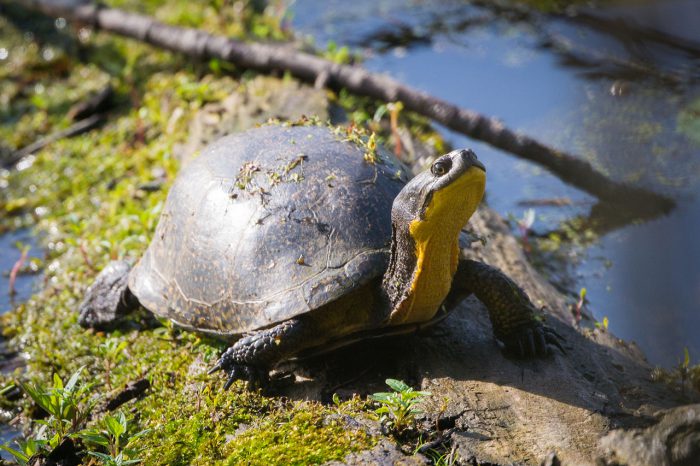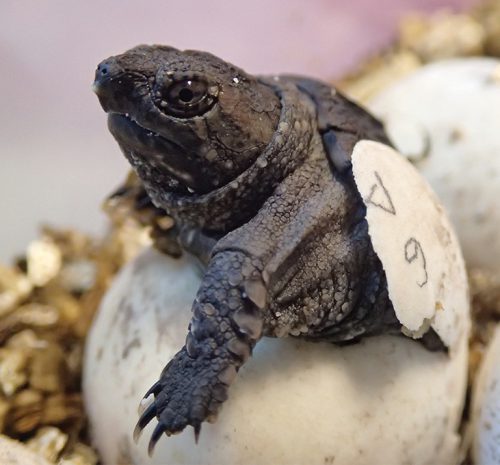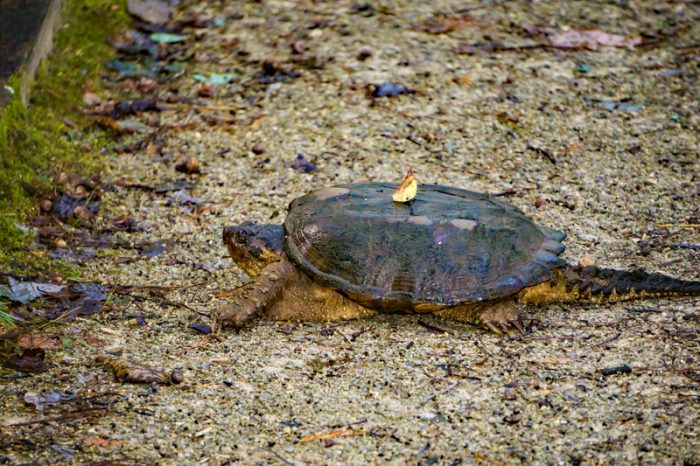Turtles are one of nature's most distinct species.
A big reason for that is its shell! No other animal is built quite like a turtle. But these animals are also amazingly varied. They come in all sizes and live in all sorts of habitats—freshwater, salty oceans, forests, swamps, even deserts. And they are survivors, too—turtles have been around since the days of the dinosaurs.
Here in Canada, there are eight species of freshwater turtles, including the eastern snapping turtle, Blanding's turtle, and painted turtle. But even these proven survivors are in some trouble. All eight of these species are now endangered. These animals have been dealing with a changing climate and human encroachment (an invasion or disruption of their normal habitat by humans). These threats include a loss of wetlands (a favourite home!) and roads through their homes, which are deadly for the slow-moving reptiles who try to cross them.
That's why the Canadian Wildlife Federation (CWF) has been stepping in to lend a hand.
For years now, the CWF have helped to safely raise young turtles. They rescue eggs, let them hatch in safe environments, then release the young turtles back into the wild. There they can hopefully flourish and build back up the numbers of their species.
And even better, everyday people are helping out, too.
Finding turtles in danger

Blanding's turtle is one of eight endangered freshwater turtle species in Canada. (Wikimedia Commons)
The first step in helping turtles is locating them! For a long time, the CWF would have to send out their experts and volunteers to locate turtle nests across Ontario. It was a lot of work and slow-going.
But thanks to CWF campaigns to spread the word about turtles in need, more and more members of the public started to help out.
"Every year we get more phone calls and emails from people trying to help the turtles," said Dave Seburn, an expert at the CWF, in an interview with CBC radio. "This year, virtually every single nest we collected was because people called us."
Not in safe spaces
This is not a good spot for a turtle nest! And yet, it is places like these where some nests are found. (Getty Embed)
You might wonder why it isn't best to just leave the turtle nests alone. After all, they've survived for hundreds of millions of years!
There are a few reasons.
For one, according to Seburn, many of these nests are in places where they are in immediate danger from humans. They are on construction sites, in public parks, and, in this case, a baseball diamond between third base and home plate!
Also, turtles don't stick around and protect their nests the way birds and some other reptiles do. Their eggs are a favourite food of predators like raccoons or foxes, who can easily eat nearly all of a nest.
Normally, this would just be a matter of natural life (for most animals, only a fraction of the eggs they lay grow up to be adults). But the numbers of wild turtles are so low right now that they need as many young turtles to survive as possible.
"If we didn't [rescue turtle eggs] and if raccoons and other nest predators got 80 or 90 per cent of the nest, [we are] not taking care of the next generation," Seburn told CBC.
It is the only way that their numbers can bounce back and the species can no longer be at risk.
Safe and sound

A snapping turtle baby hatching under the care of the CWF. (cwf-fcf.org)
Once the CWF hears about a nest, they gently collect the eggs and bring them back to their headquarters. There they have machines called incubators. These recreate a warm, moist, safe environment where the eggs can develop and hatch.
After they hatch, the hatchlings are allowed to grow a little and hang out with their fellow turtle buddies. Then they are released back into the wild in a safe place that is as close to where they were originally found as possible. (So not back into the baseball diamond!)
Overall, the process takes about two months. It's not a long time. But it is so invaluable in the fight to save turtles.
Right now, the CWF have already begun returning turtle hatchlings to the wild. We wish those little reptiles luck and congratulate those workers on a job well done. And if you ever find a turtle nest yourself, you know what to do.
Give the Canadian Wildlife Federation a ring!
 Full grown eastern snapping turtles are powerful animals, but they are still at risk. (ID 159850328 © Larry Metayer | Dreamstime.com)
Full grown eastern snapping turtles are powerful animals, but they are still at risk. (ID 159850328 © Larry Metayer | Dreamstime.com)









